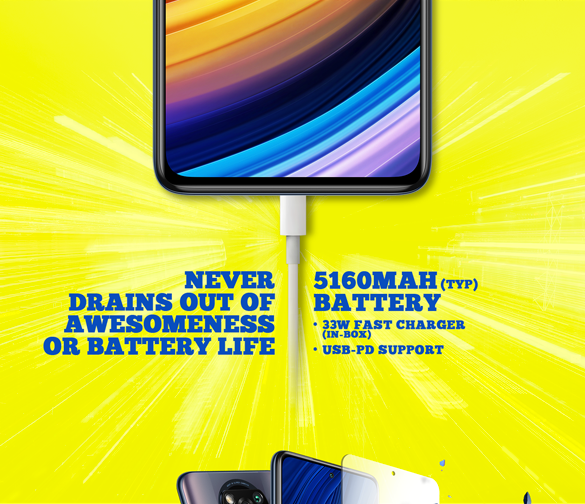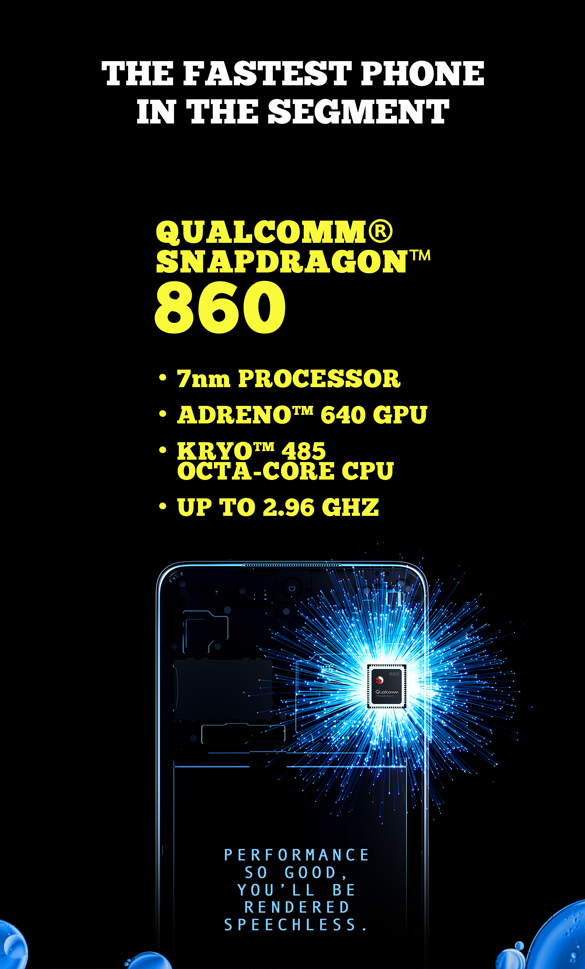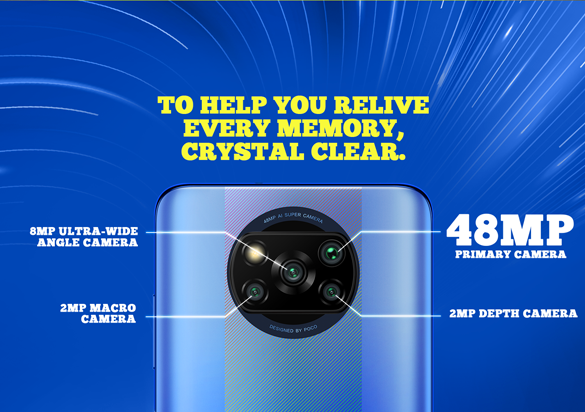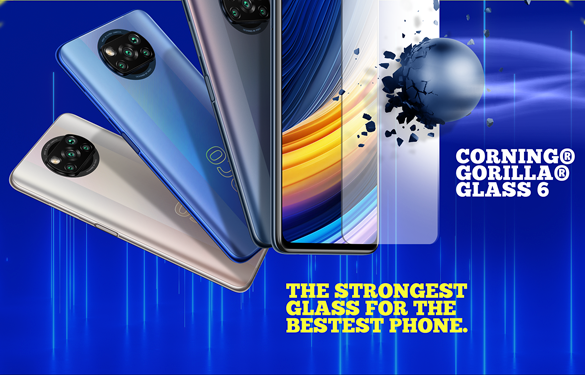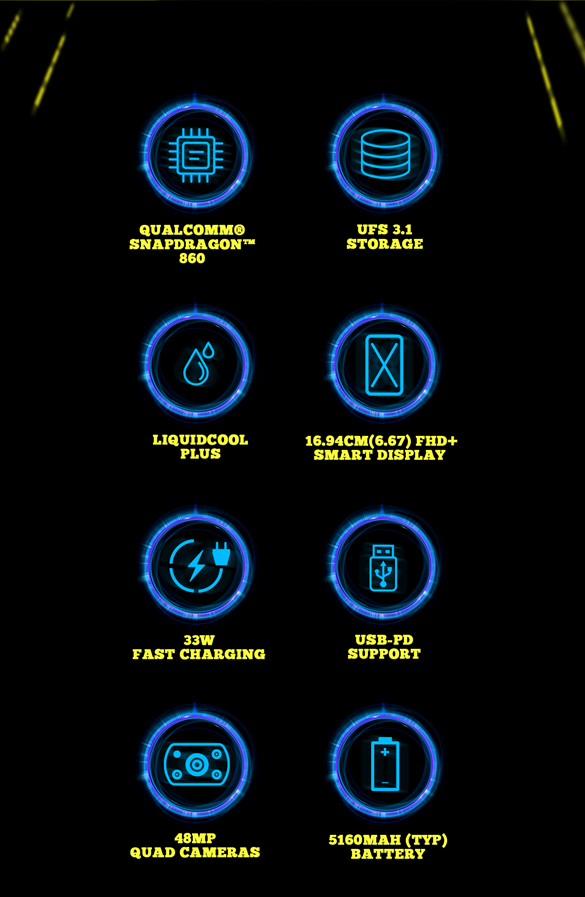If you have been searching for the best phone under 20k then you are correct place because I do not share a list of phones. The list makes us confuse and I don't want you to get confused. So, let's start...
According to me, this is the best phone under 20k. It's a really good phone with really good specs, specially Snapdragon 860.
POCO X3 PRO
I have researched a lot to provide the best phone with all the features which can fulfill the requirements of every person. You name it, you have it on this phone. BUT, please don't compare this phone with Flagship phones.
Introduction
The spirit of the first Pocophone, the F1, lives on in the recently launched Poco X3 Pro and Poco F3. With 120Hz panels, flagship-grade CPUs, dual speakers, and big batteries, these two mid-rangers reach new heights. Today, we'll look at the less expensive Poco X3 Pro - the first Snapdragon 860 smartphone - and its value-for-money features.
The Poco X3 Pro is based on the Poco X3 NFC, and they both have the same design. The Pro version, on the other hand, has far superior hardware: it's the first phone to operate on the Snapdragon 860 SoC, which is a repackaged version of Qualcomm's once-flagship Snapdragon 855+ CPU.
The Poco X3 Pro is IP53 dust and water-resistant, has a 6.67" IPS LCD screen with 1080p resolution and 120Hz refresh rate support, and the same 5,160mAh battery capable of 33W fast charging as the Poco X3 NFC. Stereo speakers, a microSD card, NFC, an IR blaster, and even a 3.5mm port are all included.
The camera seems oddly strange, and it's not in a pleasant manner. The Poco X3 Pro, for example, boasts a quad-camera setup on the rear with a 48MP primary camera, an 8MP ultrawide, a 2MP macro, and a 2MP depth snapper. It's not horrible; it's just that the normal X3 model had a 64MP main camera and a 13MP ultra-wide camera, and we can't help but feel that the Pro has been downgraded in this area.
Obviously, the most important change since the original X3 is the much-improved SoC, which should allow many popular games to run at higher frame rates and take advantage of the 120Hz screen's full potential. This is a common problem with HRR-capable mid-rangers, and we'll gladly accept the update, even if it means sacrificing some camera megapixels.
There isn't anything missing on this €250 phone that we can think of. Yes, a telephoto camera and an AMOLED screen would have been nice.
Display
The same 6.67" IPS LCD screen that we saw on the Poco X3 NFC is used on the Poco X3 Pro. It has a resolution of 1,080 x 2,400 pixels (395ppi), supports HDR10, and has a refresh rate of 120Hz and a touch sampling rate of 240Hz.
The selfie camera is housed in a punch-hole on the panel. The hole is minor, but the backlighting around it is uneven owing to LCD technology.
One peculiarity is that, despite the fact that the screen supports HDR10 and is recognized as such, Netflix and Prime do not now identify it as HDR-capable (they do stream in Full HD, though). After that, there's YouTube. Perhaps it'll be up to the services to add the X3 Pro to their list of compatible devices. The Widevine L1 DRM is available, and the DRM programs correctly identify the screen as HDR10, thus we're hopeful that correcting this issue will be possible. The screen supports an adaptive 120Hz refresh rate and a fixed 60Hz one. You can choose either from Settings. The touch sensors are working with a 240Hz sampling rate, which should be appreciated by gamers mostly.
When manually adjusted, the display reaches a maximum brightness of 458 nits, which is exactly what Xiaomi promised. When set on Auto and exposed to intense light, it may reach a maximum of 534 nits. That's a shame because the Poco X3 NFC screen can get as bright as 630 nits on Auto. The blacks are deep enough even if not the darkest we've seen, and the contrast turned out excellent at about 1400:1.
Battery
The Poco X3 Pro, like the Poco X3 NFC, is equipped with a big 5,160 mAh battery. Fast wired charging is supported, and the phone comes with a 33W adaptor. The new Poco X3 Pro acquitted itself admirably in our battery test, scoring 112 hours. It can make over 33 hours of phone calls, stay online for more than 17 hours, or play videos for half a day.
Inside the box, the Poco X3 Pro comes with a 33W converter and a 3A USB-C cable. According to Xiaomi's official announcement, the 33W charger can charge up to 59 percent in 30 minutes and 100 percent in 59 minutes.
Speakers
The Poco X3 Pro offers what seems to be a proper stereo speaker setup. There is one grille at the bottom, while the sound comes from a hole at the top and through the earpiece grille. The two parts seem equally loud, and we find the output balanced.
Software
The Poco X3 Pro comes pre-installed with Android 11 and the Poco-spiced MIUI 12. The MIUI 12 version has been available for a while, and even though it runs on Android 11, you can't tell because it covers everything so well. The Poco launcher has a slightly distinct system theme, complete with icons, which you may change if you don't like it.
The fingerprint scanner on the side of the screen is used to unlock it. The reader is simple to set up, runs quite quickly, and has excellent accuracy. We recommend setting the unlock method to Press because the always-on reader may read your palm and/or other fingers, disabling the fingerprint unlock until you enter your PIN. A 2D Face Unlock is also available, however, it is significantly less secure than the 3D Face Unlock.
The home screens are populated with shortcuts, folders, and widgets, as is customary. If enabled, Google's Discover will appear in the leftmost window.
In case you were wondering, the Poco X3 Pro doesn't have any Super Wallpapers. The Poco-fied MIUI 12 includes an app drawer, but unlike the Redmi phones, the Poco X3 Pro does not have the option to disable it. It categorizes your apps for you automatically. The first option is All, which includes all apps. Communication, Entertainment, Photography, Tools, News, and Business are the next categories. You can change the names of these categories or turn them off entirely.
The Snapdragon 860 chipset is used for the first time in the Poco X3 Pro. Even if the model number is new, the hardware is familiar: it's a repackaged version of Qualcomm's top SoC for 2019, the Snapdragon 855+. It has the same processor and graphics, but it supports a wider range of cameras and RAM.
The Snapdragon 860 is built on TSMC's 7nm node and features an octa-core processor with a 1+3+4 configuration: a single Kryo 485 Gold core (a Cortex-A76 derivative) clocked at 2.96GHz, three more Kryo 485 Gold cores clocked at 2.84GHz, and a cluster of four Kryo 485 Silver cores (Cortex-A55 derivative) clocked at 1.78GHz.
The GPU is an Adreno 640, which, despite being two generations old, is still more powerful than any mid-range offering and should easily handle HRR-capable games.
The Poco X3 Pro comes in two configurations: the base model has 6GB of RAM and 128GB of storage, while the top variant has 8GB+256GB of storage. The memory is LPDDR4x, while the storage is UFS 3.1.
Camera
The Poco X3 offers Quad Cameras. A 48MP primary camera (down from 64MP on the X3 NFC) is joined by an 8MP ultrawide snapper (down from 13MP on the X3 NFC), a 2MP macro imager, and a 2MP depth sensor on the Poco X3 Pro's rear. The selfie camera is still a 20MP front-facing camera.
The primary camera of the Poco X3 Pro is a 48MP Sony IMX 582 Quad-Bayer 1/2" sensor with 0.8m pixels, a 25mm f/1.8 lens, with PDAF. This camera has a Night Mode feature.
The second camera is an 8MP camera with a 15mm f/2.2 lens. The focus is fixed, and Night Mode is also available.
The macro camera has a resolution of 2MP and an f/2.4 aperture with 1.75m pixels, but no focusing. Finally, a 2MP depth sensor is included.
A 20MP Samsung S5K3T2 ISOCELL Plus 1/3.4" Tetra-pixel sensor sits behind a 26mm f/2.2 lens on the selfie camera. The focus has been set.
The default camera app is characteristic of MIUI in that it allows you to switch between settings by swiping left and right, and it includes all possible modes except the Macro. The viewfinder's zoom shortcut toggles between ultrawide, ordinary 1x, and 2x zoom (digital).
A flash mode switch, an HDR switch, an AI toggle, Google Lens, and a magic wand with beauty effects and filters are all located on the opposite end of the viewfinder. More features, like the Macro mode and a link to the settings, are hidden behind a hamburger menu. There is no ability to change the output resolution for any of the cameras.
The Pro mode is compatible with the regular camera, the ultra-wide camera, and the macro camera. There's also the option of taking manual 48MP photos. You can use a shutter speed of up to 30 seconds and an ISO of up to 6400 on the main camera. The slowest shutter speed for the ultrawide is the 30s, while the slowest shutter speed for the macro is 1/4s.
By default, the main camera saves 12MP photographs, which are quite good for a mid-range camera. The resolved detail is adequate but not outstanding; delicate features are frequently smudged (such as grass). However, the dynamic range is good, and even when Auto HDR was turned on, it did not activate HDR once.
The colors are accurate representations of real-life settings. The noise level is incredibly low, and we may argue that the noise reduction has obliterated some fine detail. This could be fixed in the future firmware update by finetuning the processes.
It is possible to shoot in 48MP, however, the results are varied. Because the photographs are less processed and have more noise, you can see a little more foliage. The dynamic range is even better, because of the multi-stacking used to create the high-resolution image where one shouldn't be possible. However, the noise gets in the way, especially in the shadows.
The selfies' 20MP images provide enough detail, beautiful colors, and good contrast. While the focus sweet spot has a limited range, the Poco X3 Pro has enough tolerance to accommodate varying arm lengths and people who enjoy close-up images.
There are portrait selfies available, but the separation isn't as good, and you can up with smeared ears and hear. The blur, on the other hand, looks great.
Video Capabilities
With its main camera, the Poco X3 Pro can capture videos up to 4K@30fps, however 1080@60fps and 1080@30fps are also available, and following a recent update, it now enables up to 1080p@960fps video recording. The ultrawide snapper has a maximum resolution of 1080p@30fps, while the macro cam has a maximum resolution of 720p@30fps.
Electronic stabilization is available on both the primary and ultrawide cameras, and it works with any resolution or frame rate. There's also a GoPro-like SuperSteady mode, which uses the main camera to produce heavily cropped and incredibly stabilized Full HD footage.
In 4K, the video bitrate is 40-42Mbps, while the audio is captured in stereo at 96Kbps. The clips have a lot of resolved information, and the scenario appears amazing - the colors are precise, the contrast is great, and the dynamic range is plenty.
PROS
1)Signature design; dust and splash resistance is rated at IP53.2)120Hz refresh rate and HDR10 support on a large screen.3)Battery life is excellent, and charging is quick.4)Stereo speakers with good balance and volume.5)Outstanding stability and top-notch performance.6)Day and night, the cameras are dependable, and the selfies are acceptable.7)Good 4K footage, and EIS works as well.8)3.5mm jack, IR blaster, microSD slot, MIUI 12, Android 119)The launch price is intriguing.
CONS
1)It's a little big.2)The pixel reaction time on a screen isn't perfect (we are nit-picking here)
I think there is nothing to think about the CONS of this phone because it's a mid-range phone and you are already getting more than enough.
Verdict
I think this is the best phone which you can buy right now. You are getting a hell lot of Flagship features under 20k which is the best part of this phone. I would highly recommend you to go for this phone.
Tags:
Best Phones


